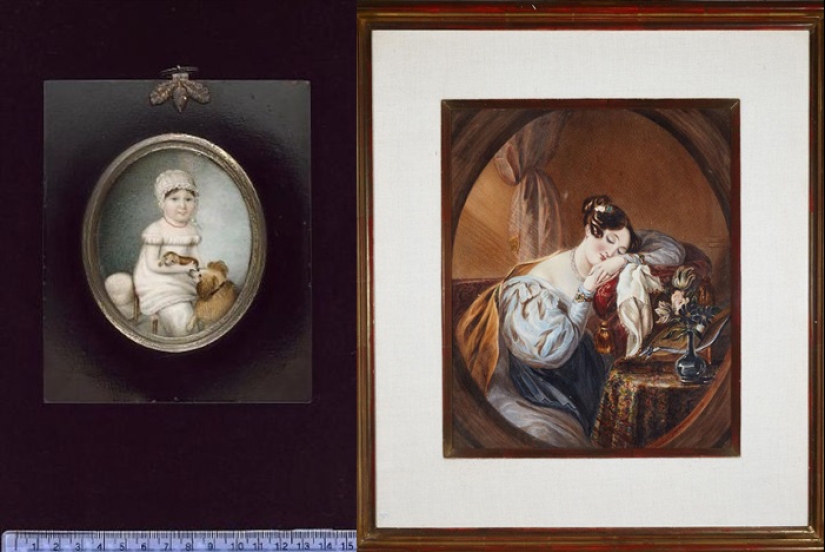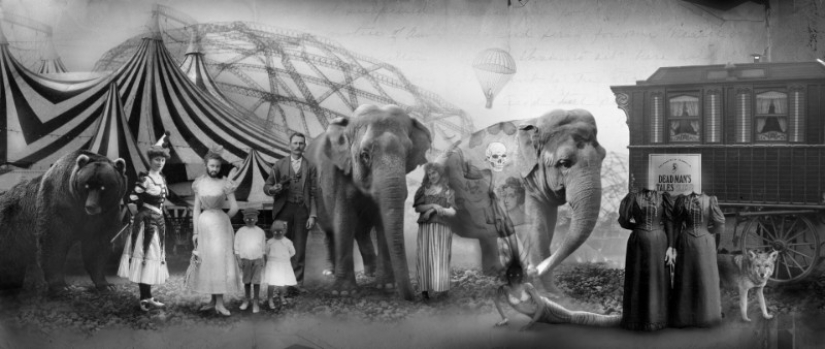Amazing Artist Sarah Biffen, Born Without Arms and Legs
When people say they can't do something because they lack skills or opportunities, it's worth remembering the story of Sarah Biffen. She was born without arms or legs, to a poor family, in 18th-century Britain. No one believed that the girl would live to be a year old. But Sarah not only survived, but also became a famous artist, from whom the Queen herself commissioned portraits.

Sarah Biffen was born in October 1784 to a farming family in Somerset, England. Her parents were shocked to see their newborn: she had no arms or legs, only rudimentary appendages that resembled flippers. At the time, people with such physical disabilities were considered doomed, especially in poverty.

However, Sarah's family decided not to abandon her. They were good Christians and decided that everything was God's will. And the girl showed incredible resilience and will to live. She was not at all satisfied with the life of a plant and her gradual decline. From an early age, she learned to cope with everyday tasks on her own: to eat, dress, and even sew, holding a needle with her teeth. Despite this, the girl was still a burden for her poor family, because she could not do farm work.

At the age of 12, Sarah's life changed. Her parents sold her to Mr. Dukes' traveling circus, which was common practice at the time. Circuses back then were very different from today's. Yes, they had acrobats, magicians, and trainers, but the core of the circuses was always people with physical disabilities. Working in a "freak show" for the disabled was hard and humiliating. But for most people from poor families, the choice was limited: the circus or death from starvation.

Artists with physical disabilities were not only able to support themselves. Some of them earned enough for a comfortable old age, and some even became rich. Russian Nikolai Kobelkov, who, like Biffen, was born without arms and legs, even became an Austrian millionaire. So it can be said that Sarah has settled down well in life.

Sarah, who was born without limbs, was vulnerable even among other performers. She could not perform even simple tricks, so she was offered something unusual - to draw. This idea belonged to the owner of the circus, Mr. Dukes, who saw in it an opportunity to attract viewers.
At first, Sarah drew for the circus audience, holding a brush or pencil in her mouth. But soon art captivated her so much that she began to surpass her teacher. Drawing, a skill not available to every healthy person, opened up a whole new world for her. She drew not only in the arena, but also in her free time.

In Victorian England, female artists could be counted on the fingers of one hand. It was incredibly difficult to break into the world of fine art, occupied by the stronger sex. Sarah Biffen did it! Soon people began coming to the circus not only to watch her paint. They wanted to order paintings from her and were willing to pay for it.

Sarah painted miniatures, portraits and landscapes on ivory. At that time, medallions with images of loved ones, home or a dear landscape were at the height of fashion. Tiny pictures were not easy to paint even for a physically able artist. How Sarah managed it, holding tiny brushes in her mouth, no one knows.
The year 1808 was a turning point in Sarah's life. She performed at St. Bartholomew's Fair. She was positioned as "the wonder of wonders," and many wanted to see the amazing artist. A certain Earl Morton also looked into Biffen's circus tent. He was skeptical and expected to see another deception. To his surprise, he saw not a clever circus performer playing a role, but a real artist.

Sarah impressed the Earl so much that he immediately assigned her a salary. He also found her a teacher, the Royal Academy artist William Craig. Thus, Biffen got from the traveling circus straight to the Royal Academy. The girl justified the hopes of her patron. In 1821, she was awarded the medal of the Society of Artists of the Royal Academy.

Soon, members of the royal family began to commission Sarah Biffen's works. She even painted a portrait of Queen Victoria herself. The customers really liked the paintings, and Sarah was generously paid. But that was not the most important thing. The artist who painted the portrait of the queen herself began to enjoy incredible authority. There were so many orders that Earl Morton insisted on opening a portrait studio on Bond Street in London.

Medallions of portraits or landscapes on ivory became popular, and Biffen was among those artists whose work was highly prized. It was an incredible success for a woman of her time, especially for one like Sarah. Her technique was so delicate that it astonished anyone who knew of her physical limitations.

Sarah Biffen became the most famous artist in England. Charles Dickens himself mentioned her twice in his works. Several portraits of Sarah, painted by herself and other authors, have survived. In them, she looks like a respectable lady, dressed expensively and tastefully.

But in 1827, misfortune came - the artist's patron, Earl Morton, died. Having lost her only close person, Sarah fell into depression. It became difficult for her to work, and she increasingly refused lucrative orders. At a difficult moment, Queen Victoria herself came to the artist's aid. She assigned the woman a lifelong allowance. Now Biffen could not worry about her future and work not only on order, but also for her own pleasure.

Very little is known about the last years of the amazing artist's life. It is known that Sarah Biffen closed her London studio and moved to Liverpool. She signed her last works as Sarah Wright, which may indicate that the artist got married. She left behind a large creative legacy, her paintings are still kept in private collections and museums. Biffen became a symbol of incredible strength of spirit and talent that overcame all boundaries of the possible.

Sarah Biffen died in 1850 at the age of 66. Her story continues to inspire people around the world, reminding them that neither physical limitations nor social prejudices can prevent a person from achieving greatness.
What do you think of Sarah Biffen's incredible willpower? Could you imagine yourself in her place? Share your opinion in the comments!
Recent articles

In the fall of 1972, Bill Yates traveled through the countryside in the vicinity of Tampa, Florida. At that time, he was studying ...

Severe cold weather does not give up its positions. We offer you to admire the magical photos of winter Europe, because snow and ...

Vladimir Lyubarov is an artist from the countryside who paints pictures of real life. But he brings amazing characters, birds, and ...